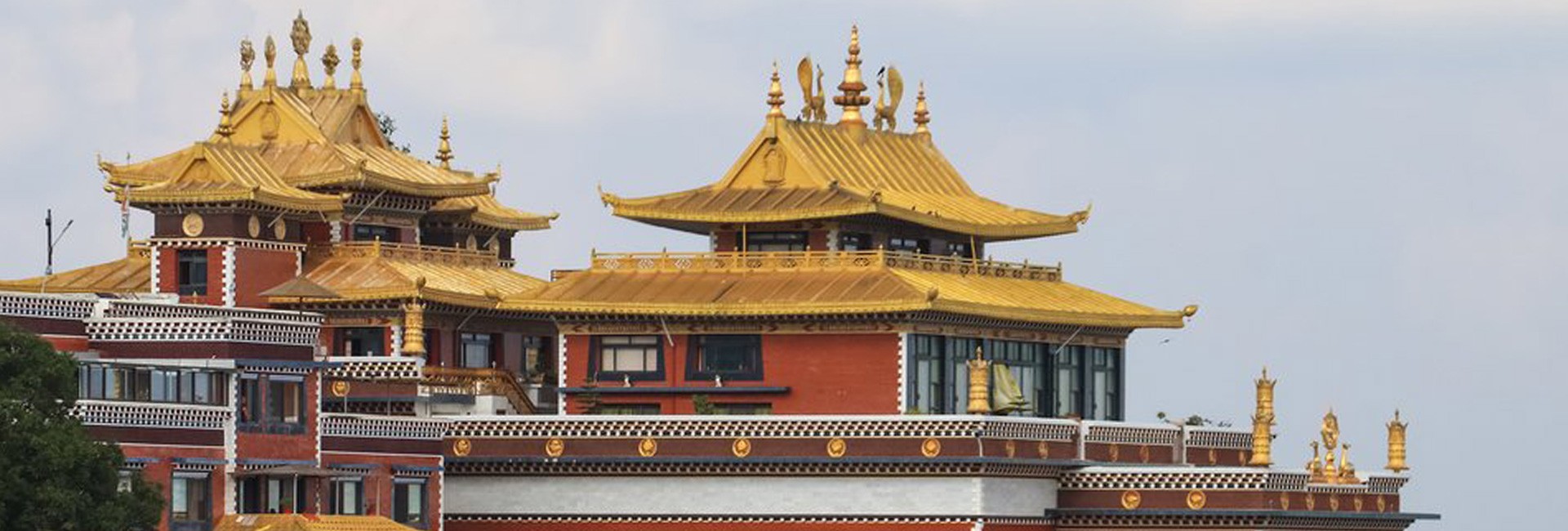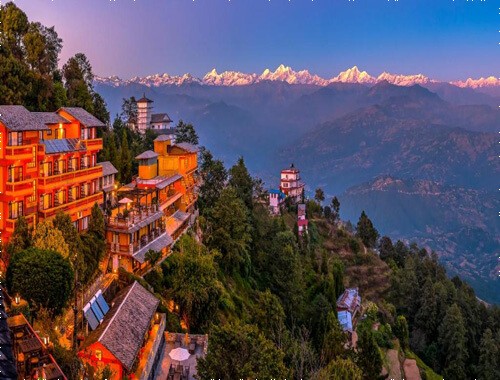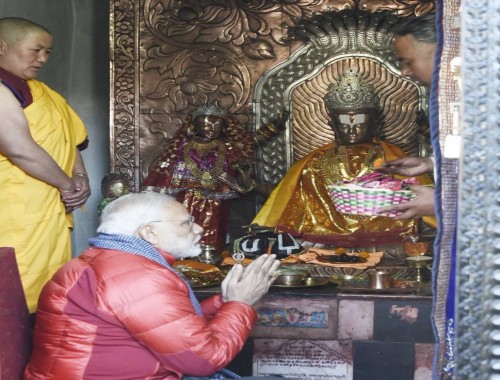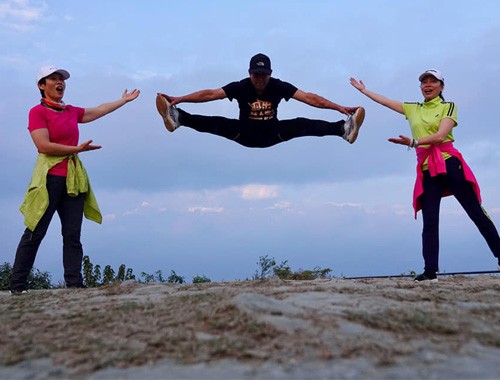Siddhartha Gautam, the future Gautam Buddha, was born in Lumbini near the Shakya capital of Kapilavastu in the southern region of Nepal known as the terai. The 5th-century Chinese pilgrim Fa-hsien described Kapilavastu as a "great scene of empty desolation", populated by a few monks, a score or two of families and dangerous animals such as lions and white elephants. Fa-hsien none the less visited well-known sites, including the Shakyan palace, the place where the
Recent excavations have uncovered evidence of stupas, monastic dwellings and the well-preserved structure of the bathing-pool. The Ashoka column -rediscovered in 1896 but snapped in half by a lightning bolt - will also be seen at Lumbini. It is also believed that Ashoka went to Patan and had four stupas built there. You will also visit Tilaurakot where it is believed that Gautam Buddha spent 29 years of his lifetime.
Nepal in the Himalayan lap has always been a sacred retreat center for religious practices. Kathmandu and its periphery have hundreds of meditation caves, monasteries and stupas related with Bodhisattvas, Shiddhas and Buddha. Here you will visit meditation cave of Guru Padmasambhava, Milarepa, Naropa and Tilopa. You will also visit Swayambhunath, Boudhanath, Namobuddha, The Asura Cave at Pharping and Patan Durbar Square which hold very high significance in Buddhism.
Yoga will also be an integral part of this trip. Every morning you will wake up early to practice yoga and meditation. In the morning you will meditate with yoga teacher which may include sound meditation with the singing bowl. You will also practice stretching and loosening exercise, also called Pre-Asana exercise, which will help to release pain and prevent muscle tensions. Your yoga sessions will also include Asanas, Sun Salutation, Pranayama and short relaxation. In the evening there will also be complete guided relaxation to rejuvenate the body and mind.
Siddhartha Gautam, the future Gautam Buddha, was born in Lumbini near the Shakya capital of Kapilavastu in the southern region of Nepal known as the terai. The 5th-century Chinese pilgrim Fa-hsien described Kapilavastu as a "great scene of empty desolation", populated by a few monks, a score or two of families and dangerous animals such as lions and white elephants. Fa-hsien none the less visited well-known sites, including the Shakyan palace, the place where the
Recent excavations have uncovered evidence of stupas, monastic dwellings and the well-preserved structure of the bathing-pool. The Ashoka column -rediscovered in 1896 but snapped in half by a lightning bolt - will also be seen at Lumbini. It is also believed that Ashoka went to Patan and had four stupas built there. You will also visit Tilaurakot where it is believed that Gautam Buddha spent 29 years of his lifetime.
Nepal in the Himalayan lap has always been a sacred retreat center for religious practices. Kathmandu and its periphery have hundreds of meditation caves, monasteries and stupas related with Bodhisattvas, Shiddhas and Buddha. Here you will visit meditation cave of Guru Padmasambhava, Milarepa, Naropa and Tilopa. You will also visit Swayambhunath, Boudhanath, Namobuddha, The Asura Cave at Pharping and Patan Durbar Square which hold very high significance in Buddhism.
Yoga will also be an integral part of this trip. Every morning you will wake up early to practice yoga and meditation. In the morning you will meditate with yoga teacher which may include sound meditation with the singing bowl. You will also practice stretching and loosening exercise, also called Pre-Asana exercise, which will help to release pain and prevent muscle tensions. Your yoga sessions will also include Asanas, Sun Salutation, Pranayama and short relaxation. In the evening there will also be complete guided relaxation to rejuvenate the body and mind.
Siddhartha Gautam, the future Gautam Buddha, was born in Lumbini near the Shakya capital of Kapilavastu in the southern region of Nepal known as the terai. The 5th-century Chinese pilgrim Fa-hsien described Kapilavastu as a "great scene of empty desolation", populated by a few monks, a score or two of families and dangerous animals such as lions and white elephants. Fa-hsien none the less visited well-known sites, including the Shakyan palace, the place where the
Recent excavations have uncovered evidence of stupas, monastic dwellings and the well-preserved structure of the bathing-pool. The Ashoka column -rediscovered in 1896 but snapped in half by a lightning bolt - will also be seen at Lumbini. It is also believed that Ashoka went to Patan and had four stupas built there. You will also visit Tilaurakot where it is believed that Gautam Buddha spent 29 years of his lifetime.
Nepal in the Himalayan lap has always been a sacred retreat center for religious practices. Kathmandu and its periphery have hundreds of meditation caves, monasteries and stupas related with Bodhisattvas, Shiddhas and Buddha. Here you will visit meditation cave of Guru Padmasambhava, Milarepa, Naropa and Tilopa. You will also visit Swayambhunath, Boudhanath, Namobuddha, The Asura Cave at Pharping and Patan Durbar Square which hold very high significance in Buddhism.
Yoga will also be an integral part of this trip. Every morning you will wake up early to practice yoga and meditation. In the morning you will meditate with yoga teacher which may include sound meditation with the singing bowl. You will also practice stretching and loosening exercise, also called Pre-Asana exercise, which will help to release pain and prevent muscle tensions. Your yoga sessions will also include Asanas, Sun Salutation, Pranayama and short relaxation. In the evening there will also be complete guided relaxation to rejuvenate the body and mind.



